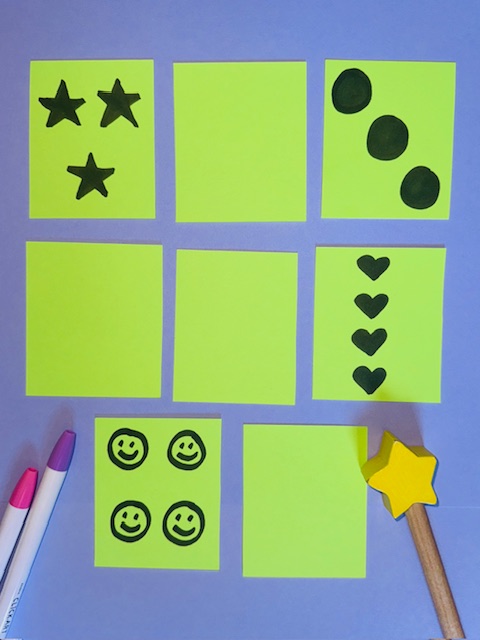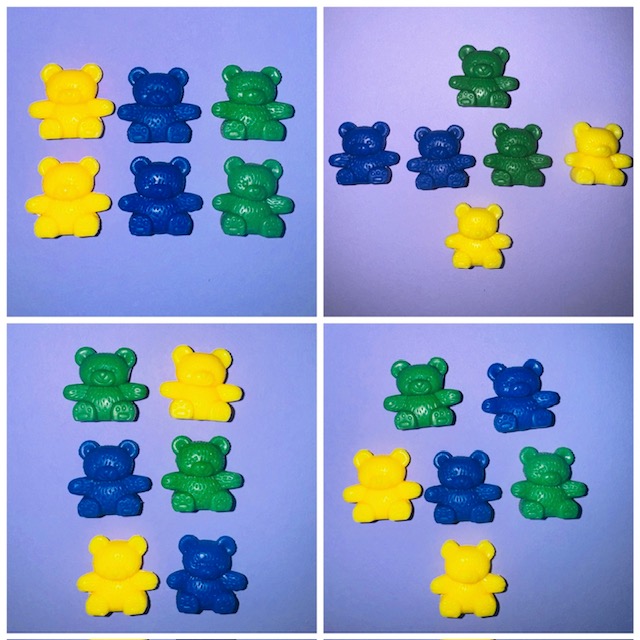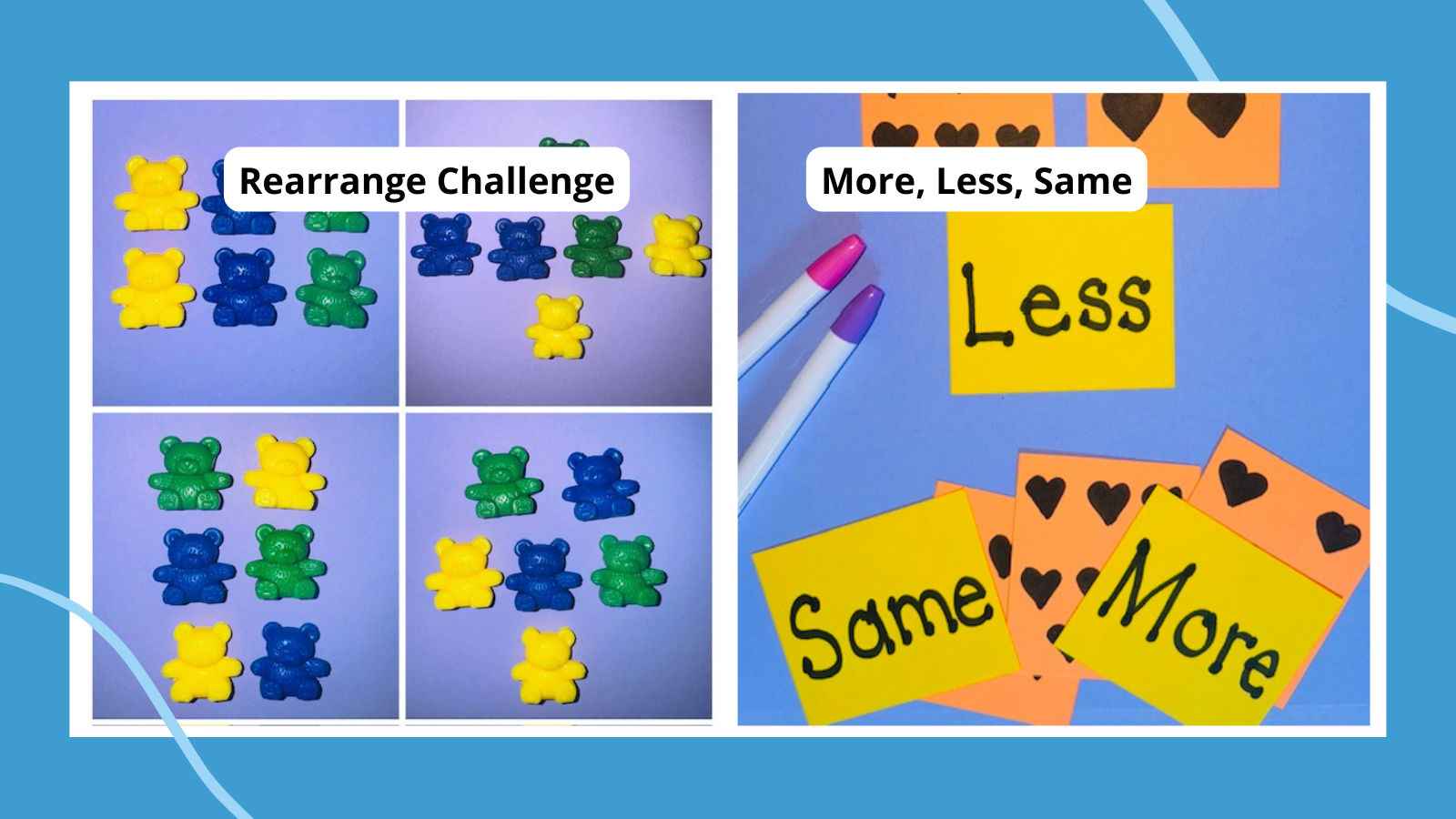One of the basic questions math helps us answer is “How many?” It’s why we add, subtract, multiply, divide, and count. One-to-one correspondence is a crucial early math counting skill. Without this understanding, students will not be able to complete basic counting tasks accurately upon which so much other math builds.
What is one-to-one correspondence?
One-to-one correspondence means that students have an understanding that each item in a group gets a separate count or number. In order to do this, students have to know the standard list of counting (number) words (like one, two, three, four, five, etc.) and also know the correct order they go in.
They also need to understand that each item gets counted only once and that the last number used is the total amount of items in the group.
Children sometimes learn the number words in a rote way, and when they count, it is almost like a poem or song. But it is very important that they learn that each number counted aloud must correspond to a separate item. Having them count aloud in the beginning is a good idea as it will help you assess any errors that might occur. It is also a good idea to have students touch the objects or pictures as they count, at least initially. As they get more practice, they will be able to just look and count and eventually just look at a group and count mentally very quickly.
Activities That Teach One-to-One Correspondence
Teaching one-to-one correspondence calls for plenty of practice counting groups of physical objects like counting chips, blocks, and crayons, as well as counting pictures of groups of objects. Here are some activities that will help students do just that.
Number Match

Using a pack of index cards, prepare several pairs of cards, each pair with the same number of same-looking items (e.g., all squares, all stars, all balloons) but in two different arrangements. For example, a pair of cards might have four stars in a row on the first card while the second card has four stars in a circle. Use various numbers and have at least four sets of cards. Mix the cards and put them out on a table or floor.
Invite students to take turns picking up a card and finding its match. In order to find the match, they will have to count and compare. Do this until all cards are picked up, and then play again. After a while, you can invite students to make their own sets of cards with simple drawings.
Next-Level Number Match

Once again, prepare sets of index cards as you did before. This time, however, the cards have the same number of items, but the items should have different sizes, colors, or shapes. For example, a pair might have three triangles on one card and three bananas on its match card.
Play the game the same way as before with the student picking up a card and finding another with the same number of items by counting, although the items look different. Again, invite students to create their own sets of cards. This is equally good practice as playing the game.
Rearrange Challenge

Display a small group of items like erasers or crayons. Put them in a row. Have a student count them aloud, touching them, using one-to-one correspondence. Then rearrange the items in a different pattern or just randomly without adding or deleting any.
Ask the student, “How many items are there now?” If the student says the original number, seeing no need to recount, they understand a major idea, that the arrangement does not change the total number of items in a group. If the student feels the need to count again, discuss why they think the amount might have changed. Allow them to recount to check. Do this several times to prove to everyone that the rule holds true no matter what arrangement you put the items in.
More, Less, Same

Using index cards, prepare sets with between 4 and 12 images on a card. Use simple shapes like pictures of squares, triangles, moons, and such. For this activity, use the same images on all the cards. For example, one card has two moons, another card has six moons, another card has seven moons, and so on. Then create three separate word cards with one word on each card: “More,” “Less,” and “Same.” Each student should also have a small set of counters like bingo chips, pennies, or cubes.
Have a student choose one number card, for example a card with six moons. This is the Master Card. Ask the student to count the moons on the card. Then using the counters, have them count and move counters that are MORE than six and put them near the More card; have them count out LESS than six and put them near the Less card, and finally count out the SAME amount and put those near the Same card.
Plus, check out these Kindergarten Math Games That Make Numbers Fun.
For more content like this, sign up for our newsletters.


